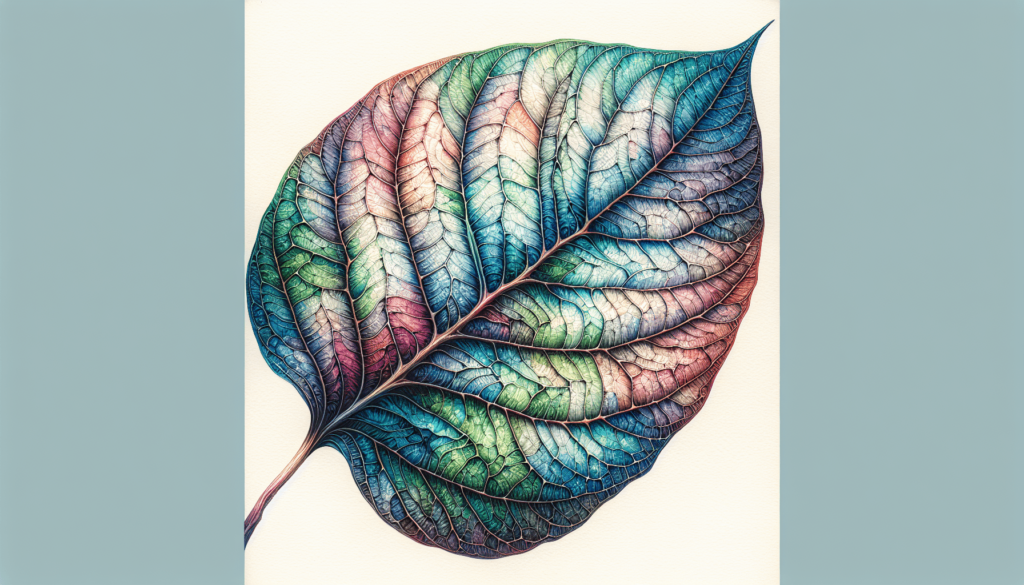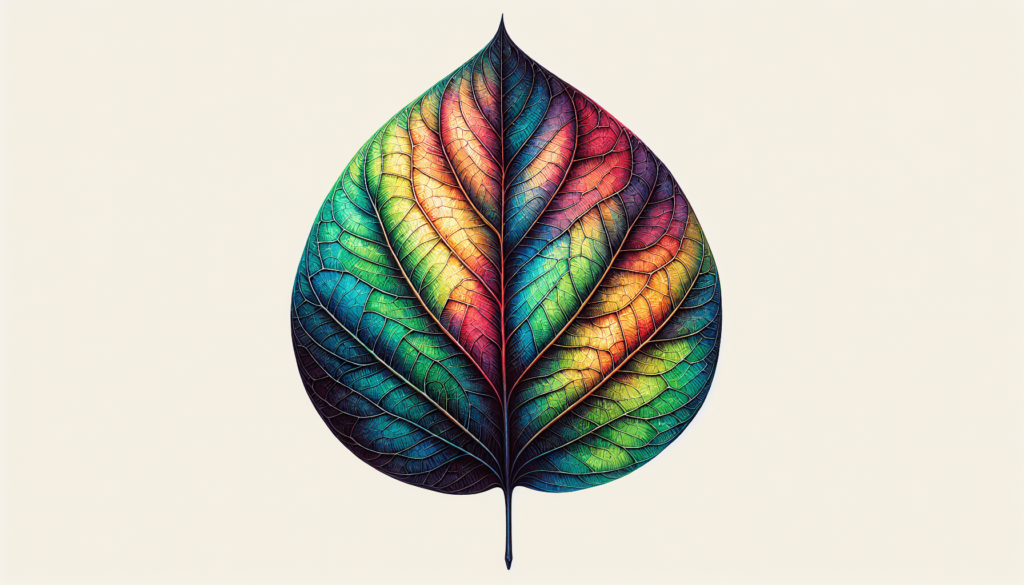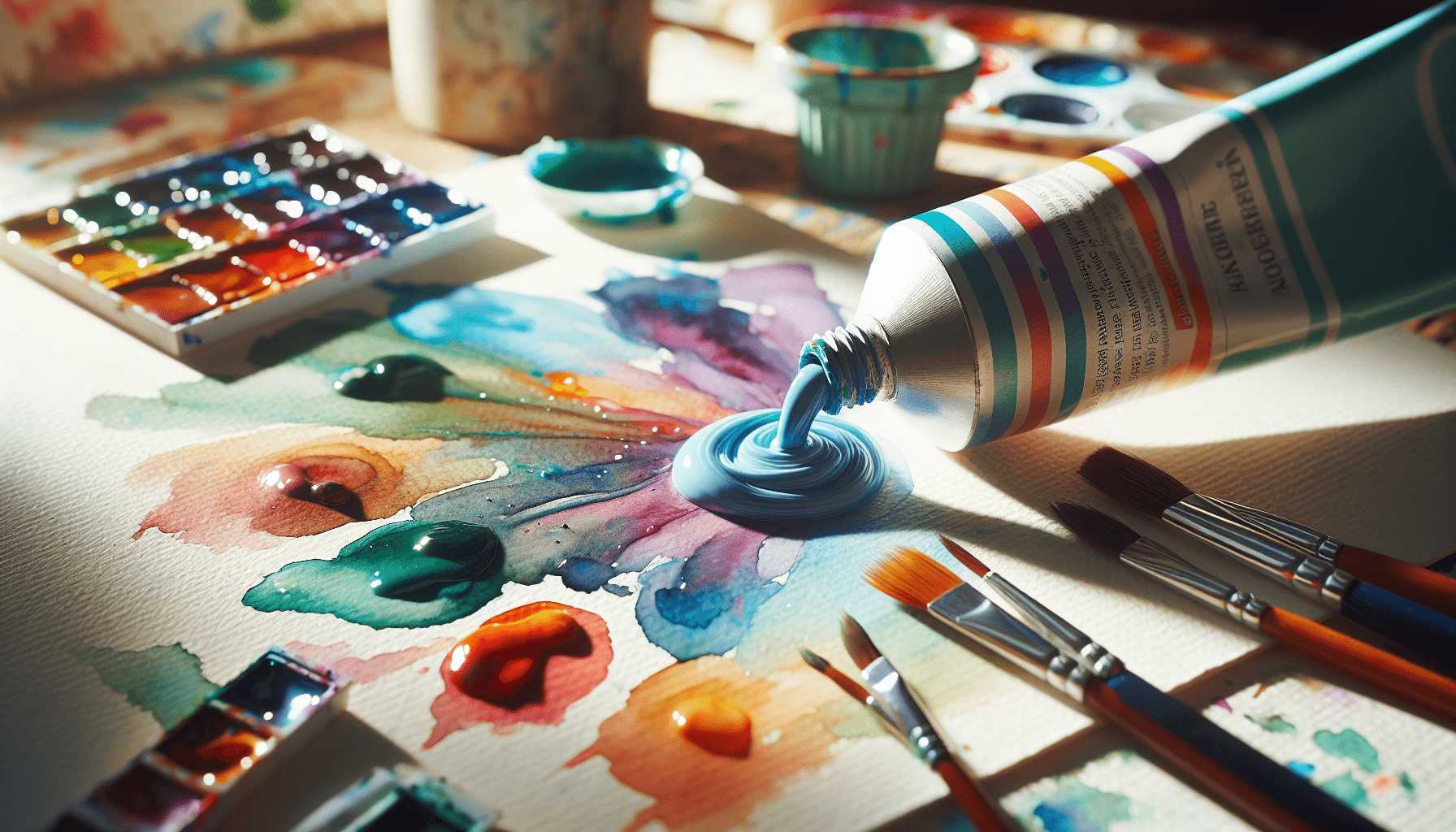Have you ever wondered how to capture the intricate beauty of a leaf using watercolor techniques? Watercolor painting is a delicate and harmonious dance between pigment, water, and the surface of your paper. This medium requires a blend of technique, patience, and an understanding of the fundamental elements of the subject at hand. In this guide, you will learn step-by-step instructions on how to paint a leaf in watercolor, transforming a simple piece of paper into a vivid representation of nature’s intricacy.

Materials You Will Need
Before starting any watercolor painting, it’s essential to have the appropriate materials. The quality of your tools will influence the final outcome of your artwork. Here is a list of items you should consider:
| Item | Description |
|---|---|
| Watercolor Paints | High-quality paints with a good range of colors |
| Watercolor Paper | Cold-pressed paper, ideally 140 lb (300 gsm) or heavier |
| Brushes | A selection of sizes, including round and detail brushes |
| Palette | For mixing your colors |
| Water Containers | Two containers: one for clean water and one for rinsing |
| Masking Tape or Board | To secure your paper and keep it flat |
| Pencil and Eraser | For sketching the outline |
| Paper Towels or Cloth | For blotting excess water and paint |
Preparing Your Workspace
Setting up a conducive workspace is critical in making your painting process smooth and enjoyable. Ensure you have adequate lighting and enough space to organize your materials conveniently. Secure your watercolor paper to a flat surface using masking tape to prevent warping. Have your water containers ready, one for clean water and the other for rinsing your brushes. Once everything is in place, you are ready to proceed.
Understanding Your Subject
The key to painting a realistic leaf lies in understanding its structure, colors, and textures. Take some time to observe a real leaf or a high-quality reference photo. Notice the veining, gradient of colors, and how light interacts with its surface. A good reference can significantly improve the accuracy and realism of your painting.
Observing The Leaf Structure
Leaves come in various shapes and sizes, each with its distinctive arrangement of veins. The primary vein, or midrib, runs down the center, with secondary veins branching out from it. Pay close attention to how these veins are distributed as they will guide your brushstrokes later.
Identifying Colors and Textures
Leaves often feature shades of green, but depending on the type and season, you might encounter yellows, reds, browns, and more. Observe any subtle color variations, especially where the veins are or where the leaf edges start to change color. Texture is important too; note how smooth or rough the surface appears.
Sketching the Outline
Using a light pencil, sketch the outline of the leaf onto your watercolor paper. Keep the lines light to ensure they do not show through the watercolor paint. Outline the main body of the leaf, and don’t forget to include details like the stem and major veins. Keep it simple and avoid pressing too hard on the paper.

Applying Your First Wash
The initial layer of paint, or the wash, sets the base tone for your watercolor leaf. It will be very light and define the basic color areas.
Choosing Your Colors
Select a light green color to begin with. You can mix a small amount of yellow with green to achieve the desired hue. Testing the color mix on a scrap piece of paper can prevent unwanted surprises on your main piece.
Painting the Base Layer
Lightly wet the area of the leaf without saturating it. Using a larger round brush, apply the light green wash over the entire leaf. Allow this layer to dry completely before proceeding to the next step. This wash will serve as the foundation upon which further details will be added.
Building Up Layers
Watercolor is a medium that thrives on layering. Each subsequent layer should add depth, texture, and color variance to your leaf.
Adding Depth with Layering
Mix a slightly darker green for your second layer. Focus on the areas that would naturally appear darker, such as near the veins and edges. Apply this layer when the previous one is completely dry to prevent colors from blending undesirably.
Detailing the Veins
With a fine detail brush, use a darker green to paint the veins of your leaf. Remember to follow the natural pattern observed in your reference. Patience is key here; take your time to capture the intricate details accurately.
Creating Highlights and Shadows
Highlights and shadows bring a sense of realism to your painting by adding dimension.
Incorporating Highlights
To incorporate highlights, you can either leave sections of the base layer unpainted or lift some color while the paint is still wet using a dry brush or paper towel. This technique brings attention to areas where light naturally hits the leaf.
Introducing Shadows
Use a mix of colors like blue, green, or even a bit of purple to create shadows. Apply these colors sparingly to avoid overpowering the painting. Shadows can define the curvature of the leaf and the seams where veins meet the surface.
Applying Final Details
The final details bring the painting to life and refine its overall appearance.
Enhancing Texture
If your leaf has a textured surface, use a dry brushing technique. Dip your brush in paint, then remove most of it on a paper towel. Lightly brush over areas to create a sense of texture without overwhelming the underlying layers.
Strengthening Edges and Veins
Revisit the veins and edges with a darker color to ensure they stand out. Fine-tuning these elements will enhance the structural integrity of your leaf.
Finishing Touches
Evaluating Your Work
Take a step back to evaluate your painting from a distance. This vantage point can help identify areas that need more attention or adjustment. Fine-tuning may involve softening hard edges, adjusting colors, or adding more detail where required.
Final Fixative
Once satisfied with your painting, consider using a fixative spray to protect your work. Ensure the painting is completely dry before application.
Conclusion
Painting a leaf in watercolor is a rewarding process that combines careful observation with thoughtful application of technique. By understanding your subject, layering your paints, and paying attention to fine details, you can create a lifelike representation of one of nature’s simple yet captivating wonders. Whether you are a seasoned artist or a beginner, these steps will guide you in capturing the intricate beauty of a leaf with watercolor.
By mastering these techniques, you not only enhance your painting skills but also gain a deeper appreciation for the natural world and its subtle complexities.



